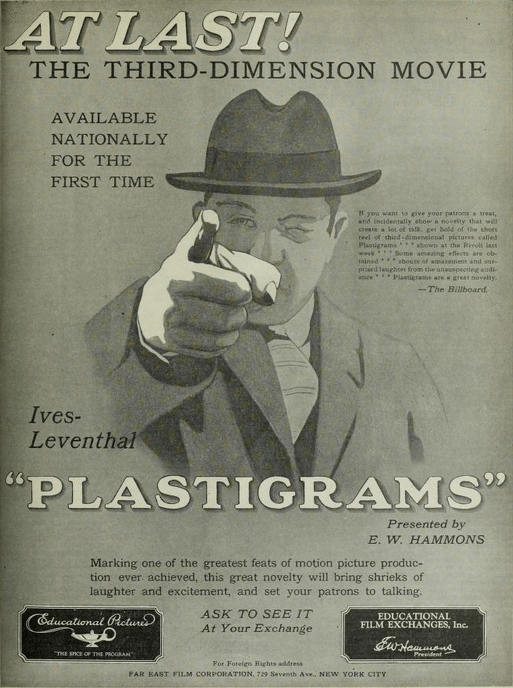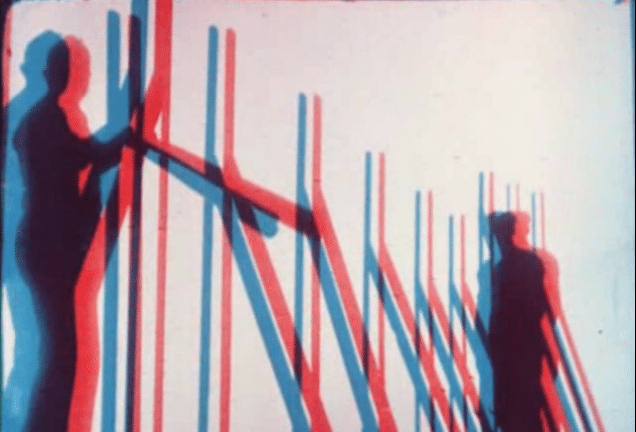Although the success of “Avatar” has, unfortunately, helped to introduce a flood of films banking on the lure of 3-D effects, 3-D films are nothing new. In fact, the earliest 3-D films were created during the silent film era.
Early in the days of silent film, films were typically one to two reels long, limiting the total film length to about 10-20 minutes. Once studio heads realized that audiences would, in fact, be willing to sit through a feature-length film, they began to add more and more reels. But short films were never entirely discarded. Often a short film or two would accompany a feature-length film in a theater, or short films would be used as part of an evening’s entertainment during a vaudeville show. The short film format also remained a great testing ground for the more experimental filmmakers and those interested in creating novelty films.
One of these novelty films was also one of the first 3-D films, “Plastigrams.”
Released in 1922 by Educational Pictures, “Plastigrams” was presented by E.W. Hammons using the Ives-Leventhal stereoscopic process. Much like the traditional “3-D” comics and postcards, the film used offset blue and red images to create its dimensional effect. Although this effect seems rather crude to us now, it was groundbreaking for audiences at the time. Upon viewing it for the first time, The Film Daily described the experience like this,
“The effect is, at first, startling and then amusing. The object of ‘Plastigrams’ is apparently to afford thrills for the audience. You look through the glasses and the objects on the screen appear to jump out at you. For instance, pictures of a crawling turtle, after being viewed for a moment, take the form of actuality and the turtle appears to be right up to your nose. Objects selected are, of course, of a nature to provide thrills such as, a hose pointed toward you, traffic jams in which you fear an impact at any moment, etc. A first rate novelty and wholly amusing.”
When Lee DeForest began experimenting with recording sound on film, “Plastigrams” even became one of the first films to boast it during its re-release in 1924 — three years before the debut of the talkie “The Jazz Singer.”
Even the marketing tactics used to advertise the film were inventive and ahead of their time. In one theater, an 11″ x 14″ lobby card was put on display. The card displayed images that used the same 3-D technique as the film, and a pair of 3-D glasses was suspended from the ceiling, allowing patrons to witness the effect first-hand before even purchasing a ticket.
The success and novelty of “Plastigrams” later helped usher in the 3-D film craze in the ’50s and, indirectly, the present day obsession with 3-D.
You can watch “Plastigrams” below. Keep in mind that the 3-D glasses of the period, however, featured blue lenses on the left and red lenses on the right – the reverse of the glasses today.
Are you new to our look back at silent film? Get familiar with the rest of our installments here.
Want to dive deeper into the world of silent film? Keep up with my posts over on Curtains or on Chicago Nitrate.

